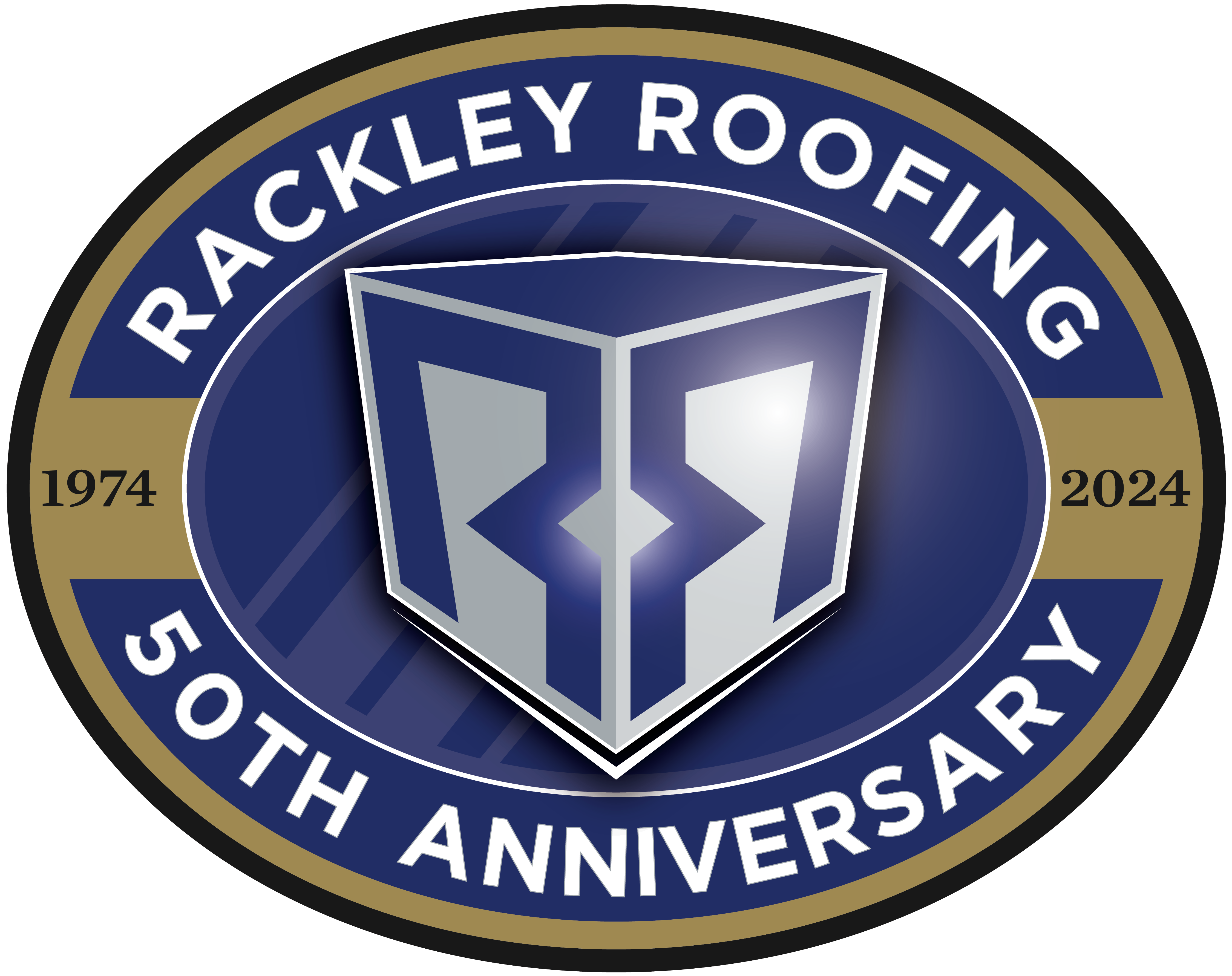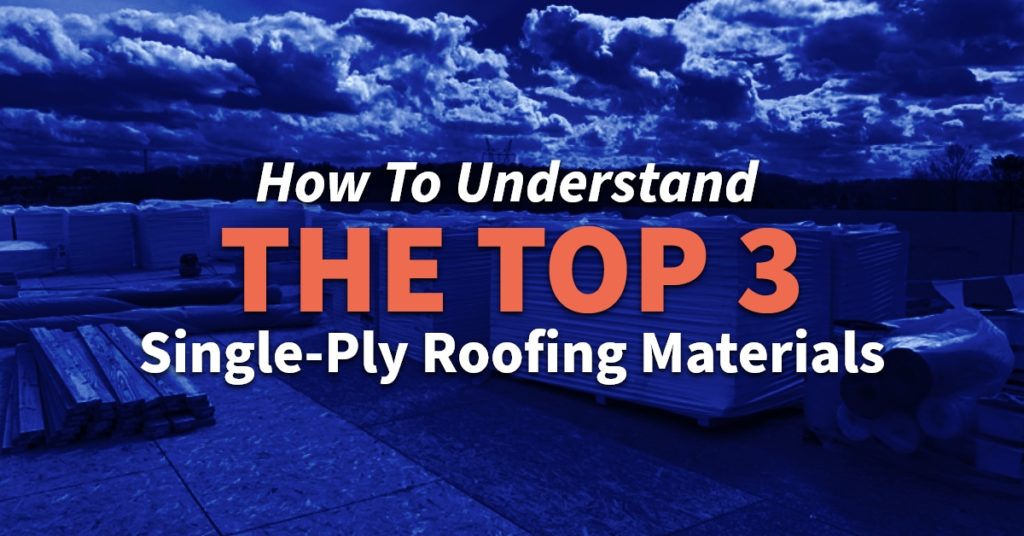For a building manager or commercial property owner suffering through years of antiquated roofing materials, single-ply roofing is a modern wonder. The top three single-ply membranes—TPO, PVC, and EPDM—all outlast traditional roof coatings and are easier to install and maintain.
What Does Single-Ply Mean?
Traditional commercial roofing methods involved layering hot asphalt (bitumen) with felts, spraying hot asphalt, mopping hot asphalt, or layering rolls of modified bitumen. Somehow, stinky, sticky, unpleasant asphalt or bitumen found its way into your roof.
Single-ply membrane roofing frees you from the noxious, hot, sticky, messy dark stuff. A single-ply membrane is one layer (single-ply) of a woven, adhered material in rolls up to 50 feet wide. It can be glued down, mechanically fastened, or ballasted. All without asphalt or bitumen!
Single-ply membrane contrasts with the labor-intensive process of laying down or rolling out multiple roofing felts, coating them with some kind of waterproof chemical. Single-ply membrane is rolled out and attached in one fast, simple operation.
PVC single-ply membrane can be custom-fabricated in a factory to fit a specific roof, reducing on-site seam closing and speeding up installation time.
What Are the Three Best Single-Ply Membranes?
In order of international popularity, the three best single-ply membranes are:
- TPO—Thermoplastic polyolefin (TPO) is a thermoplastic membrane that can be heat-welded at seams; its high reflectivity makes it energy efficient, lowering infrastructure cooling costs in hot climates
- EPDM—Ethylene propylene diene monomer (EPDM) membrane is a thermoset material available in black and white installations, both of which provide strength, durability and an ability to withstand harsh weather; highly elastic EPDM handles drastic temperature changes easily
- PVC—Polyvinyl chloride single-ply membrane is, like TPO, a thermoplastic; it has many qualities that make it ideal for use throughout the Southeastern United States: it is highly reflective, available in widths to 50 feet (reducing seams), resists chemicals, heat, and high humidity, and has great longevity
Qualities to Compare
As you perform due diligence in selecting the next roofing material for your commercial or industrial property, you have to consider more than purchase and installation costs. For traditional roofing materials and single-ply membranes, take these qualities into account:
- Durability/Lifespan—Mod Bit will possibly last 20 years, BUR roofing lasts between 20 and 30 years, TPO and PVC averages 30 years, and EPDM goes 50 years or more
- Energy efficiency—All three major single-ply membranes are available in highly reflective white, making them all good choices in hot climates
- Fire Resistance—As Facilities Net points out, all three popular single-ply materials receive Class A fire ratings, meaning they have the lowest fire spread rate
- Wind resistance—Correctly adhered single-ply membranes match or better other roofing materials for wind uplift resistance; proper installation with careful adherence to local building codes is key
- Maintenance—All three single-ply membranes require far less maintenance than Mod Bit or BUR roofing, with annual or semiannual inspections and cleaning usually sufficient for the life of the membrane
- Cost—Considering whole-life cost, single-ply membrane systems compare very favorably to traditional methods, with PVC being the most expensive, followed by TPO with EPDM costing the least; given the extraordinary durability of all these materials, any evaluation of cost-versus-lifespan tilts in favor of single-ply membranes
For Your Customers
How happy would your competitors be if they found you shut down your business for a week while a full roof replacement was in process? You cannot afford to turn away customers, stop production, or send employees home due to noxious odors or loud noises.
When you install a single-ply membrane roof, you actually benefit your customers:
- No risks of hot asphalt, anywhere
- No strong odors wafting down into the parking lot
- No loud equipment
- No interruption in all aspects of your business, from production to customer service to counter-sales
- Fast, efficient installation
- Minimal maintenance throughout the life of the roof
For Your Facilities Crews
No commercial roof of any type—low-slope or steep-slope—is safe for untrained workers. Your facilities crew can remain safely inside or on the ground when you have a single-ply membrane roof:
- Installation is performed by highly trained technicians using full safety equipment, including PPE and fall-arrest gear
- Annual or semiannual maintenance is performed by that same commercial roofer’s crews, including inspection, cleaning, and routine repairs
- Emergency roofing service should only be performed by the roofer who installed your roof; your roofer knows your roof, installation method, and materials best
By keeping untrained boots off your single-ply membrane roof, your facilities crew is freed up to perform all other tasks in relative safety, using the skills and tools they know best. Your single-ply commercial roof should be the sole territory of your commercial roofer. Rackley Roofing, with service areas throughout the Southeastern United States, is ready to go to work for you and your business. Contact us today to learn more about single-ply roofing solutions and much more.




